 The UK Chancellor of the Exchequer, Philip Hammond, announced in the Budget this week that national insurance contributions (NICs) for self-employed people will rise from 9% to 11% by 2019. These are known as ‘Class 4’ NICs. The average self-employed person will pay around £240 more per year, but those on incomes over £45,000 will pay £777 more per year. Many of the people affected will be those working in the so-called ‘gig economy’. This sector has been growing rapidly in recent years and now has over 4 million people working in it.
The UK Chancellor of the Exchequer, Philip Hammond, announced in the Budget this week that national insurance contributions (NICs) for self-employed people will rise from 9% to 11% by 2019. These are known as ‘Class 4’ NICs. The average self-employed person will pay around £240 more per year, but those on incomes over £45,000 will pay £777 more per year. Many of the people affected will be those working in the so-called ‘gig economy’. This sector has been growing rapidly in recent years and now has over 4 million people working in it.
Workers in the gig economy are self employed, but are often contracted to an employer. They are paid by the job (or ‘gig’: like musicians), rather than being paid a wage. Much of the work is temporary, although many in the gig economy, such as taxi drivers and delivery people stick with the same job. The gig economy is just one manifestation of the growing flexibility of labour markets, which have also seen a rise in temporary employment, part-time employment and zero-hour contracts.
 Working in the gig economy provides a number of benefits for workers. Workers have greater flexibility in their choice of hours and many work wholly or partly from home. Many do several ‘gigs’ simultaneously, which gives variety and interest.
Working in the gig economy provides a number of benefits for workers. Workers have greater flexibility in their choice of hours and many work wholly or partly from home. Many do several ‘gigs’ simultaneously, which gives variety and interest.
In terms of economic theory, this flexibility gives workers a greater opportunity to work the optimal amount of time. This optimum involves working up to the point where the marginal benefit from work, in terms of pay and enjoyment, equals the marginal cost, in terms of effort and sacrificed leisure.
For firms using people from the gig economy, it has a number of advantages. They are generally cheaper to employ, as they do not need to be paid sick pay, holiday pay or redundancy; they are not entitled to parental leave; there are no employers’ national insurance contributions to pay (which are at a rate of 13.8% for employers); the minimum wage does not apply to such workers as they are not paid a ‘wage’. Also the firm using such workers has greater flexibility in determining how much work individuals should do: it chooses the amount of service it buys in a similar way that consumers decide how much to buy.
 Many of these advantages to firms are disadvantages to the workers in the gig economy. Many have little bargaining power, whereas many firms using their services do. It is not surprising then that the Chancellor’s announcement of a 2 percentage point rise in NICs for such people has met with such dismay by the people affected. They will still pay less than employed people, but they claim that this is now not enough to compensate for the lack of benefits they receive from the state or from the firms paying for their services.
Many of these advantages to firms are disadvantages to the workers in the gig economy. Many have little bargaining power, whereas many firms using their services do. It is not surprising then that the Chancellor’s announcement of a 2 percentage point rise in NICs for such people has met with such dismay by the people affected. They will still pay less than employed people, but they claim that this is now not enough to compensate for the lack of benefits they receive from the state or from the firms paying for their services.
Some of the workers in the gig economy can be seen as budding entrepreneurs. If you have a specialist skill, you may use working in the gig economy as the route to setting up your own business and employing other people. A self-employed plumber may set up a plumbing company; a management consultant may set up a management consultancy agency. Another criticism of the rise in Class 4 NICs is that this will discourage such budding entrepreneurs and have longer-term adverse supply-side effects on the economy.
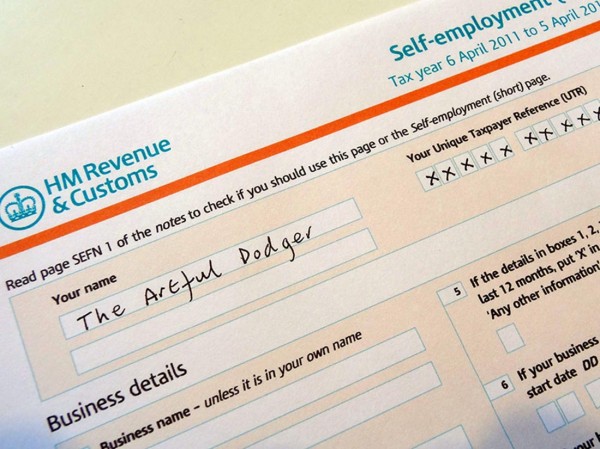 As far as the government is concerned, there is a worry about people moving from employment to self-employment as it tends to reduce tax revenues. Not only will considerably less NIC be paid by previous employers, but the scope for tax evasion is greater in self-employment. There is thus a trade-off between the extra output and small-scale investment that self-employment might bring and the lower NIC/tax revenue for the government.
As far as the government is concerned, there is a worry about people moving from employment to self-employment as it tends to reduce tax revenues. Not only will considerably less NIC be paid by previous employers, but the scope for tax evasion is greater in self-employment. There is thus a trade-off between the extra output and small-scale investment that self-employment might bring and the lower NIC/tax revenue for the government.
Articles
Thriving in the gig economy Philippine Daily Inquirer, Michael Baylosis (10/3/17)
6 charts that show how the ‘gig economy’ has changed Britain – and why it’s not a good thing Business Insider, Ben Moshinsky (21/2/17)
What is the ‘gig’ economy? BBC News, Bill Wilson (10/2/17)
Great Freelance, Contract and Part-Time Jobs for 2017 CareerCast (10/3/17)
We have the laws for a fairer gig economy, we just need to enforce them The Guardian, Stefan Stern (7/2/17)
The gig economy will finally have to give workers the rights they deserve Independent, Ben Chu (12/2/17)
Gig economy chiefs defend business model BBC News (22/2/17)
Spring Budget 2017 tax rise: What’s the fuss about? BBC News, Kevin Peachey (9/3/17)
Self-employed hit by national insurance hike in budget The Guardian, Simon Goodley and Heather Stewart (8/3/17)
What national insurance is – and where it goes The Conversation, Jonquil Lowe (10/3/17)
Britain’s tax raid on gig economy misses the mark Reuters, Carol Ryan (9/3/17)
Economics collides with politics in Philip Hammond’s budget The Economist (9/3/17)
UK government publications
Contract types and employer responsibilities – 5. Freelancers, consultants and contractors GOV.UK
Spring Budget 2017 GOV.UK (8/3/17)
Spring Budget 2017: documents HM Treasury (8/3/17)
National Insurance contributions (NICs) HMRC and HM Treasury (8/3/17)
Questions
- Give some examples of work which is generally or frequently done in the gig economy.
- What are the advantages and disadvantages to individuals from working in the gig economy?
- What are the advantages and disadvantages to firms from using the services of people in the gig economy rather than employing people?
- In the case of employed people, both the employees and the employers have to pay NICs. Would it be fair for both such elements to be paid by self-employed people on their own income?
- Discuss ways in which the government might tax the firms which buy the services of people in the gig economy.
- How does the rise of the gig economy affect the interpretation of unemployment statistics?
- What factors could cause a substantial growth in the gig economy over the coming years?
 When UK unemployment was 7.7% in July 2013, Mark Carney, the newly arrived governor of the Bank of England, said that the Bank would probably have to rise interest rates when the unemployment rate dropped below 7%. Below that rate, it was expected that inflation would rise. In other words, 7% was the NAIRU – the non-accelerating rate of inflation. The most recent figure for the unemployment rate is 4.8% and yet the Bank of England has not raised interest rates. In fact, in response to the Brexit vote, it cut Bank Rate from 0.5% to 0.25% in August last year. (Click here for a PowerPoint of the chart below.)
When UK unemployment was 7.7% in July 2013, Mark Carney, the newly arrived governor of the Bank of England, said that the Bank would probably have to rise interest rates when the unemployment rate dropped below 7%. Below that rate, it was expected that inflation would rise. In other words, 7% was the NAIRU – the non-accelerating rate of inflation. The most recent figure for the unemployment rate is 4.8% and yet the Bank of England has not raised interest rates. In fact, in response to the Brexit vote, it cut Bank Rate from 0.5% to 0.25% in August last year. (Click here for a PowerPoint of the chart below.)
The NAIRU is a similar, although not identical, concept to the natural rate of unemployment. The natural rate is the equilibrium rate consistent with an overall long-term balance of aggregate labour demand and supply: i.e. the rate after short-term cyclical movements in unemployment have been discounted. It is thus a long-term concept.
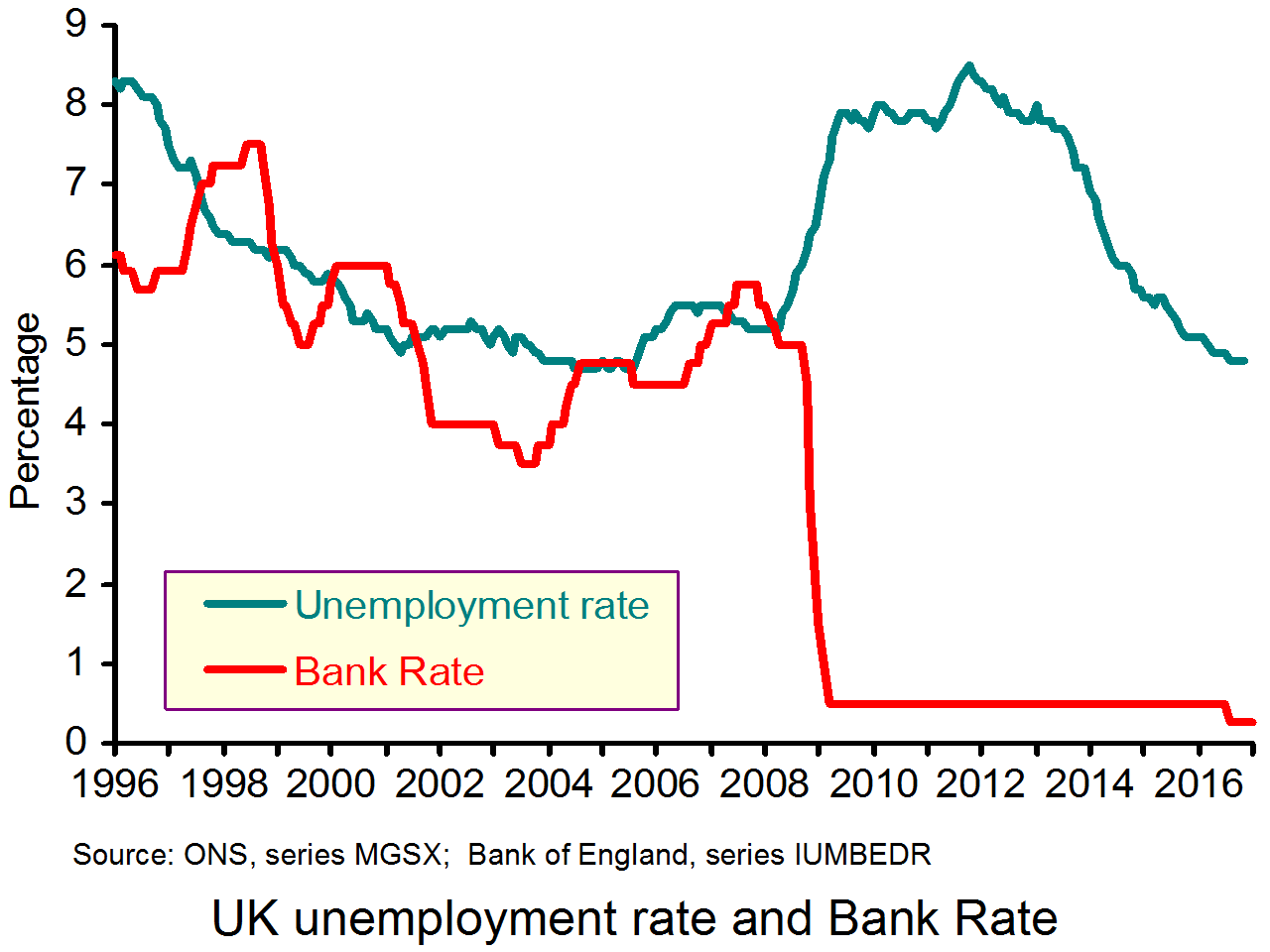 The NAIRU, although similar, focuses on the relationship between inflation and unemployment. With inflation caused solely by demand-side factors, the natural rate and the NAIRU will be similar if not identical. However, if cost-push factors change – say there is a poor harvest, which pushes up food prices and inflation (temporarily), or a substantial depreciation of the exchange rate caused by political factors (such as Brexit) – the NAIRU would increase, at least in the short term, as a higher rate of unemployment would be necessary to stop inflation rising. In the long term, although being defined differently, the NAIRU and the natural rate will be the same.
The NAIRU, although similar, focuses on the relationship between inflation and unemployment. With inflation caused solely by demand-side factors, the natural rate and the NAIRU will be similar if not identical. However, if cost-push factors change – say there is a poor harvest, which pushes up food prices and inflation (temporarily), or a substantial depreciation of the exchange rate caused by political factors (such as Brexit) – the NAIRU would increase, at least in the short term, as a higher rate of unemployment would be necessary to stop inflation rising. In the long term, although being defined differently, the NAIRU and the natural rate will be the same.
In practice, because the Bank of England is targeting inflation at a 24-month time horizon, the NAIRU for the UK at that point could also be seen as the natural rate.
So with the Bank of England not raising interest rates despite the considerable fall in the unemployment rate, does this imply a fall in the natural rate of unemployment? The answer is yes. The reason has to do with changes in the structure of the labour market.
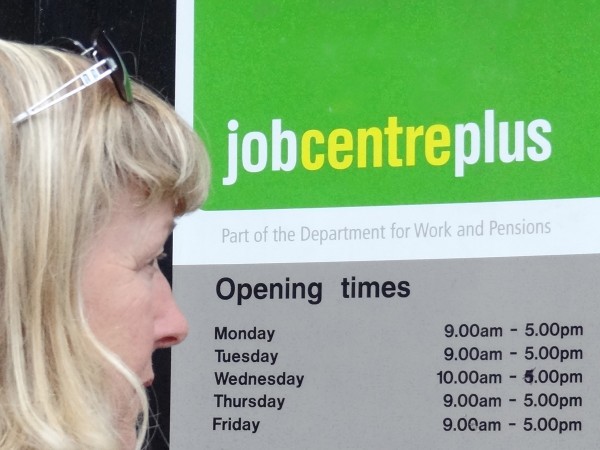 The proportion of young people and women with children returning to the labour market has fallen. Such people have a higher-than-average rate of unemployment since they typically spend a period of time searching for a job.
The proportion of young people and women with children returning to the labour market has fallen. Such people have a higher-than-average rate of unemployment since they typically spend a period of time searching for a job.
Tax and benefit reforms over the years have increased the incentive for the unemployed to take work.
Perhaps the biggest factor is a greater flexibility in the labour market. As union power has waned and as people are increasingly working on flexible contracts, including zero-hour contracts, so this has moderated wage increases. At the same time, many firms are facing increased competition both from abroad and domestically via the Internet. This has put downward pressure on prices and hence on the wages firms are willing to pay.
 The effect has been a fall in the NAIRU and probably the natural rate. Frictions in the labour market have reduced and people losing their jobs because of changes in industrial structure find it easier to get jobs in low-skilled service industries, where employers’ risks of taking on such workers have fallen because of the loss of rights for such workers.
The effect has been a fall in the NAIRU and probably the natural rate. Frictions in the labour market have reduced and people losing their jobs because of changes in industrial structure find it easier to get jobs in low-skilled service industries, where employers’ risks of taking on such workers have fallen because of the loss of rights for such workers.
So what is the natural rate of unemployment today? It is certainly much lower than 7%; the consensus is that it is probably below 5%. As Kristin Forbes, External MPC Member of the Bank of England stated in a recent speech:
[Unemployment] is forecast to increase gradually from its current 4.8% to a high of 5.0% in the second half of 2017, before falling back to its current rate by the end of 2019. To put this in context, 5.0% was previously believed to be around the UK’s natural rate of unemployment – the rate below which unemployment could not fall without wages picking up to levels inconsistent with sustaining inflation around the 2% target. Unemployment at 5.0% is also below the average unemployment rate for the UK over the pre-crisis period from 1997 to 2007 (when it was 5.5%).
She went on to discuss just what the figure is for the natural, or ‘equilibrium’, rate of unemployment (U*). One problem here is that there is considerable uncertainty over the figure in the current forecast made by the Bank.
[An] assumption in the forecast about which there is substantial uncertainty is of the equilibrium unemployment rate – or U* for short. Since I have been on the MPC, the Committee has assumed that U* was around 5%. This implied that the more by which unemployment exceeded 5%, the more slack existed in the economy, and the less upward momentum would be expected in wages (controlling for other factors, such as productivity growth).
 As part of our annual assessment of regular supply-side conditions this January, Bank staff presented several pieces of analysis that suggested U* may be lower than 5% today [see, for example]. The majority of the MPC voted to lower our estimate of U* to 4.5%, based partly on the persistent weakness of wage growth over the past few years after accounting for other factors in our models. [See page 20 of the February 2017 Inflation Report.]
As part of our annual assessment of regular supply-side conditions this January, Bank staff presented several pieces of analysis that suggested U* may be lower than 5% today [see, for example]. The majority of the MPC voted to lower our estimate of U* to 4.5%, based partly on the persistent weakness of wage growth over the past few years after accounting for other factors in our models. [See page 20 of the February 2017 Inflation Report.]
My own assessment, however, suggested that although U* was likely lower than 5% today, it is likely not as low as 4.5%. If true, this would suggest that there is less slack in the economy than in the MPC’s central forecast, and wage growth and inflation could pick up faster than expected.
Against that, however, uncertainty related to Brexit negotiations could make firms more cautious about raising wages, thereby dampening wage growth no matter where unemployment is relative to its equilibrium. Moreover, even if we could accurately measure the level of U* in the economy today, it could easily change over the next few years as the labour force adjusts to any changes in the movement of labour between the UK and European Union.
Determining the precise figure of the current natural rate of unemployment, and predicting it for the medium term, is very difficult. It involves separating out demand-side factors, which are heavily dependent on expectations. It also involves understanding the wage elasticity of labour supply in various markets and how this has been affected by the increased flexibility of these markets.
Articles
When will Britons get a pay rise? The Guardian, Phillip Inman (26/2/17)
BoE decision, Inflation Report – Analysts react DigitalLook, Alexander Bueso (2/2/17)
Bank of England hikes UK economic growth forecasts but warns of rising inflation The Telegraph, Szu Ping Chan (2/2/17)
Bank of England publications
Inflation Report Bank of England (February 2017)
A MONIAC (not manic) economy Bank of England Speeches, Kristin Forbes (8/2/17)
The labour market Bank of England Speeches, Michael Saunders (31/1/17)
Questions
- Distinguish between the following terms: natural rate of unemployment, NAIRU, equilibrium rate of unemployment, disequilibrium rate of unemployment.
- For what reasons did the Monetary Policy Committee members feel that the equilibrium rate of unemployment might be as low as 4.25%?
- Why might it be as high as 5%?
- How are changes in migration trends likely to affect (a) wage growth and (b) unemployment?
- How is the amount of slack in an economy measured? What impact does the degree of slack have on wage growth and inflation?
- What is meant by the ‘gig’ economy? How has the development of the gig economy impacted on unemployment and wages?
- Why has there been a considerable rise in self employment?
- How may questions of life style choice and control over the hours people wish to work impact on the labour market?
- If people are moving jobs less frequently, does this imply that the labour market is becoming less flexible?
- Why may firms in the current climate be cautious about raising wages even if aggregate demand picks up?
 The earnings gap between men and women is well-documented and depending on how we measure it, we get different figures. One of the most common measures is mean earnings per hour. The latest estimates suggest that women are paid around 20% less than men, though other data does give lower figures. Though actions have been taken to reduce the inequality between men and women, it still persists in many areas and this has led to plans for new league tables from Nicky Morgan.
The earnings gap between men and women is well-documented and depending on how we measure it, we get different figures. One of the most common measures is mean earnings per hour. The latest estimates suggest that women are paid around 20% less than men, though other data does give lower figures. Though actions have been taken to reduce the inequality between men and women, it still persists in many areas and this has led to plans for new league tables from Nicky Morgan.
The inequality gap has certainly come down. Back in 1970, the wage differential was around 37 per cent, so progress has been made, although the wage gap in the UK has stabilised somewhat. The gender wage gap is at least in part explained by occupations, as women have tended to be prevalent in some of the more poorly paid occupations. However, significant earnings differentials still exist within occupations. We see fewer women in the more senior positions; women tend to take career breaks and hence this can cause more investment into training and promoting men. Furthermore, we often simply see some form of prejudice or discrimination whereby women are just paid less than men, despite the Equal Pay Act.

As a means of combatting this inequality, Nicky Morgan, the Women and Equalities Minister, has announced plans that will require private companies and voluntary organisations employing more than 250 workers to reveal their pay gap. They will have to produce this information online and this will a means to bring down the inequality that exists between men and women in the same occupations. The first League Table of this pay gap will be published in April 2018 so companies will have to begin compiling the information from April 2017. This has received criticism from some, as it is not starting soon enough, but it is seen as a step in the right direction.
Carolyn Fairbairn, CBI Director-General warned that these League Tables shouldn’t be used to name and shame firms, as many factors might explain wage differentials. She noted:
“Where reporting can be useful is as a prompt for companies to ask the right questions about how they can eradicate the gender pay gap … The government should consult closely with business to ensure that this new legislation helps close the gender pay gap, rather than ending up as a box-ticking exercise.”
Clearly there are some close links between the gender pay gap and concerns about poverty and minimum wages and although the League Tables perhaps should not be used to name and shame, one might think it is inevitable that this is how they will be viewed. The following articles consider Nicky Morgan’s inequality plans.
Reports
Gender Pay Gap European Commission
Annual Survey of Hours and Earnings, 2015 Provisional Results Office for National Statistics (November 2015)
Pay gap reporting Equal Pay Portal2016
Articles
Gender pay gap reporting for big firms to start in 2018 Guardian, Rowena Mason (12/02/16)
Gender pay gap to be revealed by employers to tackle inequality Financial Times, Sarah O’Connor (12/02/16)
Firms forced to reveal gender pay gap BBC News (12/02/16)
Gender pay gap League Tables to ‘name and shame’ companies Telegraph, Steven Swinford (12/02/16)
UK companies must reveal gender pay gap under new plans Independent, Oliver Wright (12/02/16)
Companies told to publish gender pay gap Sky News (12/102/16)
Gender pay gap: Business groups mixed on Nicky Morgan’s new name-and-shame plans International Business Times, Bauke Schram (12/02/16)
Now every firm with more than 250 staff must put gender pay gap data online in move to encourage companies to reward staff equally Mail Online, Jack Doyle and Rosie Taylor (12/02/16)
Questions
- Use a labour market diagram to explain how gender pay gaps can emerge based on different marginal products.
- How can gender pay gaps emerge because of women taking career breaks and being less geographically mobile?
- Use information on the ONS website to compare pay differentials across occupations. Are the biggest and smallest differentials where you would expect?
- There are numerous reasons why men have traditionally been paid more than women. Which reasons could be said to be irrational and which are rational?
- If employers were forced to give genuinely equal pay for equal work, how would this affect the employment of women and men? What would determine the magnitude of these effects?
- Do you think this naming and shaming will be effective in reducing the gender pay gap amongst the largest companies? Can you suggest any other policy options?
- If the Equal Pay Act is in place, why can companies still pay women less?
 Labour markets can be a key indicator of the strength of an economy, with emphasis placed on measures including the unemployment rate and the rate of job creation. Over the past few decades, we have seen many changes in the UK labour market, with more women, more part-time jobs, flexible hours and a shift towards services. After the financial crisis, unemployment declined and more and more people were entering the labour market. But one criticism of this was zero-hours contracts. They are nothing new and were considered in earlier blogs.
Labour markets can be a key indicator of the strength of an economy, with emphasis placed on measures including the unemployment rate and the rate of job creation. Over the past few decades, we have seen many changes in the UK labour market, with more women, more part-time jobs, flexible hours and a shift towards services. After the financial crisis, unemployment declined and more and more people were entering the labour market. But one criticism of this was zero-hours contracts. They are nothing new and were considered in earlier blogs.
Zero hours contracts are essentially what they say: a contract where you are guaranteed to work for zero hours. This means that under such a contract, there is no guarantee that you will have employment on any given day/week and hence this creates uncertainty. However, on the other side, there can be more flexibility with such a contract and with growth in female participation and part-time work, flexibility is essential for many people. James Sproule, Director of Policy at the Institute of Directors said:
“Zero hours contracts offer businesses and employees an important degree of flexibility. For skilled professionals, a degree of flexibility can boost their earning power, while flexibility also suits students and older people – the main users of zero-hours contracts – who cannot commit to a set number of hours each and every week.”
The ONS has found that businesses are using more zero-hours contracts, with a 6% rise. This reflects a growth in January from 1.4 million to 1.5 million zero-hours contracts, though this increase was not statistically significant. Over the past year, the use of these contracts has increased by 19%, from 624,000 people employed on them in 2014 to 744,000 people in 2015.
Although there has undoubtedly been an increase in the number of people employed on zero-hours contracts, there is also more recognition of these contracts. Therefore, part of the increase in the numbers could be down to this recognition and not just due to more and more people moving onto these contracts. With this greater flexibility, comes more opportunities for more people to enter the labour market. While this is a good thing, it can hide some other aspects. For example, if more people are working, it may suggest a fall in the rate of unemployment and a rise in employment, but perhaps this is misleading if some of those in employment are under-employed. The data revealed that:
On average, someone on a zero-hours contract usually works 25 hours a week, with around 40% of them wanting more hours, most from their current job, rather than in a different or additional one.
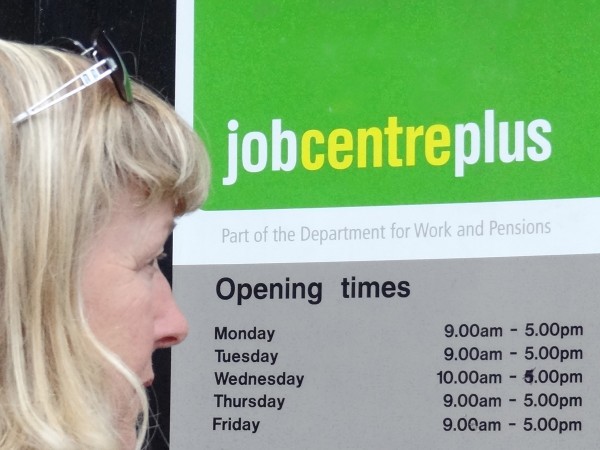 Furthermore, for some people there may be very few other options. However, there was also evidence that the possibility of zero-hours contracts has created opportunities for those who may otherwise not have entered the labour market: perhaps women re-entering the labour market and students in full time education. They also offer businesses greater flexibility and this may be a key way for the UK to improve efficiency and productivity. Jon Ingham from Glassdoor, an employment analyst said:
Furthermore, for some people there may be very few other options. However, there was also evidence that the possibility of zero-hours contracts has created opportunities for those who may otherwise not have entered the labour market: perhaps women re-entering the labour market and students in full time education. They also offer businesses greater flexibility and this may be a key way for the UK to improve efficiency and productivity. Jon Ingham from Glassdoor, an employment analyst said:
“It’s no great surprise to see the number of people on these contracts is on the up … It’s safe to say that employees who accept a zero hours contract do not do so as a career choice. For most it’s because they have limited options. For some it might be beneficial to have the flexibility to fit around their lifestyle but for others it’s a substandard contract which offers little in the way of benefits or security.”
The change in the structure of the labour market has been on-going and this may be a small change in amongst a much larger structural change. As the economy continues its recovery, we may see a return to the more typical working contract, but it appears that there will always be this greater demand for flexibility in working patterns and hence perhaps the zero-hours contracts do have a place in Britain. The following articles consider the implications of this data.
ONS Report
Employee contracts that do not guarantee a minimum number of hours: 2015 udpate Office for National Statistics September 2015
Articles
Number of workers on zero-hours contracts up by 19% The Guardian, Phillip Inman (2/9/15)
Zero-hours contracts hold their place in UK labour market Financial Times, Sarah O’Connor (2/9/15)
Zero-hours contracts jump 19% in a year Sky News (2/9/15)
19 per cent rise in people on zero hours contracts recorded across Britain over the last year Independent (2/9/15)
Use of zero-hours contracts rises by 6% BBC News (2/9/15)
Insecure ‘zero-hours’ jobs on the rise in Britain – ONS Reuters (2/9/15)
Questions
- What is a zero-hours contract?
- Outline the main advantages and disadvantages of zero-hours contracts to both workers and businesses. You should think about different types of workers in your answer.
- How do you think the increase in zero-hours contracts has affected the unemployment rate in the UK?
- What is meant by under-employment? Would you class this as inefficient?
- What other changes have we seen in the UK labour market over the past 30 years? Have these changes made the labour market more or less flexible?
- Zero-hours contracts create greater flexibility. Do you think that they create greater functional, numerical of financial flexibility?
- If a company introduces a system of zero-hours contracts, is this in accordance with the marginal productivity theory of profit maximisation from employment?
- Using the ONS data, find out how the use of zero-hours contracts varies by occupation and explain why.
 House prices are always a good signal for the strength or direction of the economy. While there will always be certain areas that are more sought after than others and such differences will be reflected in relative house prices, the regional divide that we currently see in the UK is quite astonishing.
House prices are always a good signal for the strength or direction of the economy. While there will always be certain areas that are more sought after than others and such differences will be reflected in relative house prices, the regional divide that we currently see in the UK is quite astonishing.
Prior to the financial crisis, house prices had been rising across the county, but in the year following the financial crisis, they declined by 19 per cent. It was only in 2013, when prices began to increase and, perhaps more importantly, when the variation in regional house prices began to increase significantly. In mid-2014, the UK’s annual house price inflation rate was 11.7 per cent, but the rates in London and the South East were 19.1 and 12.2 per cent, respectively. Elsewhere in the UK, the average rate was 7.9 per cent.
These regional differences have continued and figures show that the current differential between the cheapest and most expensive regional average house price is now over £350,000. In particular, data from the Land Registry shows that the average house price in London is £458,283, while in the North East, it is only £97,974.
Those people who own a house in London have benefited from such high house prices, in many cases finding that their equity in their house has grown significantly. Furthermore, any home-owners selling their house in London and moving elsewhere are benefiting from lower house prices outside London.
However, most first-time buyers looking for a house in London are being competed out of the market, finding themselves unable to gain a mortgage and deposit for the amount that they require. The opposite is, of course, happening in other parts of the country. First-time buyers are more able to enter the property market, but home-owners are finding that they have much less equity in their house.
This has also caused other problems, in particular in the labour market. Workers who are moving to jobs in London are finding the house price differentials problematic. Although wage rates are often higher in London than in other parts of the country, the house price differential is significantly bigger. This means that if someone is offered a job in London, they may find it impossible to find a house of similar size in London compared to where they had been. After all, an average family home in the North East can be purchased for under £100,000, whereas an average family home in London will cost almost £500,000.
The housing market is problematic because of particular characteristics.
Supply tends to be relatively fixed, as it can take a long time to build new houses and hence to boost supply. Furthermore, the UK has a relatively dense population, with limited available land, and so planning restrictions have to be kept quite tight, which is another reason why supply can be difficult to increase.
On the demand-side, we are seeing a change in demographics, with more single-person households; people living longer; second home purchases and many other factors. 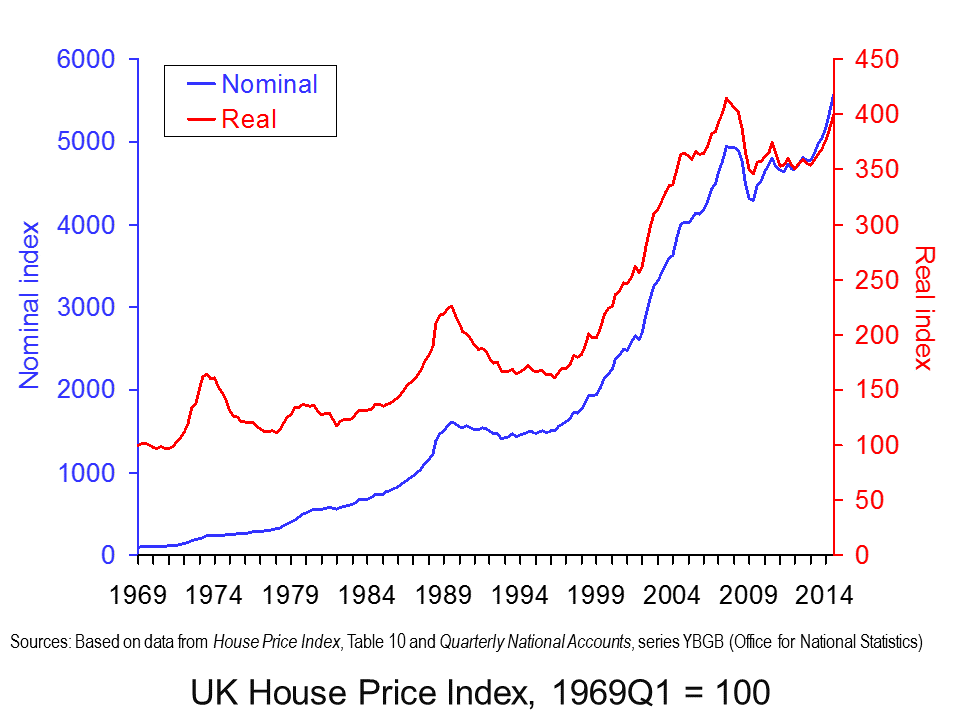 These things tend to push up demand and, with restricted supply, house prices rise. Furthermore, with certain areas being particularly sought after, perhaps due to greater job availability, ease of commuting, schools, etc., house price differentials can be significant.
These things tend to push up demand and, with restricted supply, house prices rise. Furthermore, with certain areas being particularly sought after, perhaps due to greater job availability, ease of commuting, schools, etc., house price differentials can be significant.
The Conservatives, together with the other main parties, have promised to build more houses to help ease the problem, but this really is a long-run solution.
The Bank of England will undoubtedly have a role to play in the future of the housing market. The affordability of mortgages is very dependent on interest rate changes by the Bank’s Monetary Policy Committee.
Although house prices in London have recently fallen a little, the housing cost gap between living in London and other areas is unlikely to close by much as long as people continue to want to live in the capital. The following articles consider the housing market and its regional variations.
Articles
London’s homeowners have made £144,000 on average since 2009 International Business Times, Sean Martin (20/2/15)
Wide gap in regional house prices, Land Registry figures show BBC News, Kevin Peachey (27/2/15)
Mapped: 10 years of Britain’s house price boom (and bust) The Telegraph, Anna White (27/2/15)
Oxford houses less affordable than London Financial Times, Kate Allen (26/2/15)
January’s UK house prices show unexpected climb The Guardian (5/2/15)
House prices since 2008: best and worst regions The Telegraph, Tom Brooks-Pollock (22/8/14)
House prices hit new record high of £274k with six regions now past pre-crisis peak – but the North lags behind This is Money, Lee Boyce (14/10/14)
Data
House price indices: Data Tables ONS
Links to sites with data on UK house prices Economic Data freely available online, The Economics Network
Regional House Prices Q4 2014 Lloyds Banking Group
Questions
- What are the main factors that determine the demand for housing? In each case, explain what change would shift the demand curve for housing to the right or the left.
- Which factors determine supply? Which way will they shift the supply curve?
- Put the demand and supply for housing together and use that to explain the recent trends we have seen in house prices.
- Use your answers to question 1 – 3 to explain why house prices in London are so much higher than those in the North East of England.
- Why are interest rates such an important factor in the housing market?
- Explain the link between house prices and the labour market.
- Do you think government policy should focus on reducing regional variations in house prices? What types of policies could be used?
 The UK Chancellor of the Exchequer, Philip Hammond, announced in the Budget this week that national insurance contributions (NICs) for self-employed people will rise from 9% to 11% by 2019. These are known as ‘Class 4’ NICs. The average self-employed person will pay around £240 more per year, but those on incomes over £45,000 will pay £777 more per year. Many of the people affected will be those working in the so-called ‘gig economy’. This sector has been growing rapidly in recent years and now has over 4 million people working in it.
The UK Chancellor of the Exchequer, Philip Hammond, announced in the Budget this week that national insurance contributions (NICs) for self-employed people will rise from 9% to 11% by 2019. These are known as ‘Class 4’ NICs. The average self-employed person will pay around £240 more per year, but those on incomes over £45,000 will pay £777 more per year. Many of the people affected will be those working in the so-called ‘gig economy’. This sector has been growing rapidly in recent years and now has over 4 million people working in it. Working in the gig economy provides a number of benefits for workers. Workers have greater flexibility in their choice of hours and many work wholly or partly from home. Many do several ‘gigs’ simultaneously, which gives variety and interest.
Working in the gig economy provides a number of benefits for workers. Workers have greater flexibility in their choice of hours and many work wholly or partly from home. Many do several ‘gigs’ simultaneously, which gives variety and interest. Many of these advantages to firms are disadvantages to the workers in the gig economy. Many have little bargaining power, whereas many firms using their services do. It is not surprising then that the Chancellor’s announcement of a 2 percentage point rise in NICs for such people has met with such dismay by the people affected. They will still pay less than employed people, but they claim that this is now not enough to compensate for the lack of benefits they receive from the state or from the firms paying for their services.
Many of these advantages to firms are disadvantages to the workers in the gig economy. Many have little bargaining power, whereas many firms using their services do. It is not surprising then that the Chancellor’s announcement of a 2 percentage point rise in NICs for such people has met with such dismay by the people affected. They will still pay less than employed people, but they claim that this is now not enough to compensate for the lack of benefits they receive from the state or from the firms paying for their services. As far as the government is concerned, there is a worry about people moving from employment to self-employment as it tends to reduce tax revenues. Not only will considerably less NIC be paid by previous employers, but the scope for tax evasion is greater in self-employment. There is thus a trade-off between the extra output and small-scale investment that self-employment might bring and the lower NIC/tax revenue for the government.
As far as the government is concerned, there is a worry about people moving from employment to self-employment as it tends to reduce tax revenues. Not only will considerably less NIC be paid by previous employers, but the scope for tax evasion is greater in self-employment. There is thus a trade-off between the extra output and small-scale investment that self-employment might bring and the lower NIC/tax revenue for the government.









